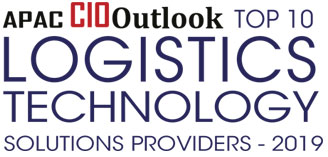Over the last decade, digital transformation has significantly altered the way logistics companies plan, procure, and fulfill their services. In a real-time economy driven by the global ecommerce engine, digital supply chains have eliminated longstanding bottlenecks and made hyper-connectedness a reality in transport and logistics. The push-based system that prevailed in the pre e-commerce era has been replaced by suppliers pushing raw materials to manufacturers who distribute finished goods to consumers by means of retailers or distributors.
This drastic change has given rise to the application of IoT technologies such as RFID tags and remote tracking tools—helping organizations gain better visibility into every aspect of the supply chain, staying compliant with stringent regulatory stipulations, and tracking and managing assets like never before. As a result, supply chain monitoring, inventory management, vehicle tracking, and safe transportation—the principal components of the connected logistics systems—have been enhanced due to the application of IoT technology. By placing small and inexpensive sensors, organizations can easily track inventory items, monitor their status, and effectively create a smart warehouse system driven by the power of IoT.
The application of IoT technology in the logistics domain has equally given rise to smart location management systems—aiding organizations easily track vehicle location, driver activities, and delivery status. Once goods are delivered, the designated manager is automatically notified by a push message. Though still in the infant stages, self-driving vehicles and drone-based deliveries are expected to drive the next evolution of IoT in the logistics landscape. It is already evident that logistics companies will jump on the opportunity to integrate these new technologies into their business processes.
In many ways, IoT is beginning to drive every component of their supply chain. However, the benefits of IoT-driven logistics solutions aren’t restricted to just the rampant ecommerce sector. The Oil & Gas industry, for example, can get alerts when a pipe or an item out in the oil field needs to be checked by a certain date, so an O&G organization can stay both compliant and sustain a safe working environment. The utility of IoT has simplified every aspect of the industry and eliminated redundant tasks, errors, and excessive manual labor.
Such advanced logistics technology solutions are becoming a staple for organizations across the logistics industry. In fact, the solutions have been widely adopted by SMBs and startups that are riding the wave of the IoT boom—a relatively inexpensive technology. This wide adoption of cognitive technologies has also given birth to a host of innovative solution providers.
To help your organization choose the ideal Logistics Technology Solution Provider, the editorial team at APAC CIO Outlook, in conjunction with a distinguished panel of CEOs, CIOs, VCs, and industry analysts, has put together a list of the ten most promising logistics technology solution providers in the industry. The list intends to help CIOs find the perfect Logistics Technology Solution Provider that can help them build an application that is perfectly-tailored around an organization’s specific needs.
We present to you APAC CIO Outlook’s “Top 10 Logistics Technology Solution Providers - 2019”




























